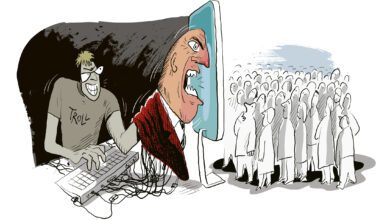
The opinions expressed are those of the author and do not necessarily represent the views of IEEE-USA or IEEE.
By the time Texas Instruments’ Jack Kilby and Fairchild Semiconductor’s Robert Noyce invented the integrated chip in the late 1950s, the U.S. patent system had become firmly established. Alas, the world’s patent “gold standard” has lately suffered vigorous attack.
America’s patent system was intended to secure the private property rights of inventors — including those of Edison, Bell, Morse, Westinghouse, McCormick, the Wright Brothers, Roebling, Fulton, Lemelson and many others. This private property right in one’s inventions, coupled with democratically issuing patents to the “first and true inventor” and affording intellectual property (IP) the same treatment as physical property under the law, distinguished the U.S. patent system from those of other nations. There, patents served as means of largesse, political favoritism and crony capitalism.
But recently, other nations have strengthened their patent systems, while America’s has steadily lost ground. The following briefly reviews some of the lowlights of this sustained assault.
Shortened Patent Terms (1994)
In a lame-duck session vote on the GATT trade agreement, Congress essentially reduced patent terms by changing them from 17 years starting when a patent is issued to 20 years from when a patent is filed. A U.S. patent traditionally secured exclusive, private property rights of set duration, unaffected by how long the Patent Office took in examination.
Premature Disclosure of Inventions (1999)
Congress ended the bedrock confidentiality with which the Patent & Trademark Office (PTO) had always treated inventors’ applications during examination. Now, the PTO automatically publishes U.S. patent applications 18 months after filing, even if no patent has been granted. This public disclosure risks turning one’s invention from something new into prior art — and no longer patentable. It also deprives an inventor from being able to practice the invention that doesn’t pass examination as a trade secret.
Administrative Patent Validity Determinations (1980, 1999, 2009, 2011)
Congress allowed the PTO to cancel issued patent claims, steadily handing administrative tribunals more tools to invalidate patents. Pre-America Invents Act (AIA) PTO reexaminations had already become weaponized in 1999, benefiting patent infringers. The most notorious AIA weapons are inter partes reviews (IPRs). Administrative invalidation undermines the two-century rule of patents enjoying the same property rights treatment as other property, such as Fifth and Seventh Amendment protections including right to a jury trial, de novo review and clear and convincing evidentiary standard. Most recently, the AIA turned the PTO postgrant challenge venue into a fully adversarial, quasijudicial entity in which anyone, even competitors, may pursue patent validity challenges repeatedly throughout the patent term. Nor does a ruling on the same patent claims by a jury trial in federal court bind the Patent Trial & Appeal Board.
Footrace to the Patent Office (2011)
Another step away from private property rights came in the AIA’s end to a patent going to the first person to discover a new invention, instead awarding a patent based on the first to file a patent application. This may be by another legitimate inventor who didn’t discover or work out the invention first or it may someone who stole the true inventor’s intellectual property.
No More Grace Period (2011)
Before the AIA, inventors had a one-year grace period from first public disclosure or sale of their invention before they had to file a patent. Congress, through the AIA, effectively ended the grace period. The grace period gave inventors the ability to talk with investors and line up funding, and with advisors, and refine their invention before going to the Patent Office. So, inventors could secure the not inexpensive patent application fee monies and present a better application more likely to gain a patent examiner’s sign-off. Inventors could prove they had actually conceived an invention first, relying on the dates and documentation in their notebooks, in case someone they discussed their invention with tried to steal the idea.
Narrowing What’s Patentable (2010, 2012, 2013, 2014)
Patentable subject matter as defined at 35 U.S.C. Sec. 101 is purposely broad: “any new and useful process, machine, manufacture, or composition of matter, or any new and useful improvement thereof.” It’s a threshold question. The judiciary, beginning with the Supreme Court, has penciled in more and more exceptions, closing the door on actual inventions. The high court’s redefinitions deprive inventors of exclusive rights to new, useful property they’ve created.
Among other destructive rulings, four key cases are Bilski v. Kappos, Mayo Collaborative Services v. Prometheus Laboratories, Association for Molecular Pathology v. Myriad Genetics and Alice Corp. v. CLS Bank. The Bilski court (2010) muddied the patentability of business methods, whether the process the invention enabled amounted to an “abstract idea,” with no explanation how to tell the difference. The Mayo court (2012) similarly branded biotech and life sciences inventions as an unexplained “law of nature.” The Myriad court (2013) ruled an isolated gene highly correlated with breast cancer and used for a diagnostic tool merely to be a “product of nature” and so unpatentable. The Alice court (2014) deemed a sophisticated financial software invention to be unpatentable as an “abstract idea.” Together, these and similar opinions encroach on the plain language of the law and close off what formerly was and should be patentable subject matter — otherwise known as intellectual property.
Vacating the Right to Exclude (1999, 2006, 2011)
In eBay v. MercExchange (2006), the U.S. Supreme Court effectively incited strict judicial application of a categorical rule denying injunctions against proven patent infringers. The fundamental patent right is the right to exclude others from making, selling, using or importing one’s invention. Prior to eBay, federal courts weighed equities after a patent owner had proven patent validity and infringement, and the vast majority of the time granted injunctive relief. That is, courts stopped patent infringers from continuing their infringing commercial activity. Exclusivity meant exclusive ownership rights. Now, inventors seeking to exercise their right to exclude get little help in court, especially those who license to another instead of practice their patent themselves. These patent owners lack leverage to force infringers to the negotiating table, to get decent royalties, fees and terms. Infringers feel no urgency to close a deal.
Similarly, so-called “prior user rights” gained a judicially created foothold in the United States in the Federal Circuit’s State Street Bank & Trust Co. v. Signature Financial Group ruling. State Street (1999) made business methods patentable subject matter, but also handed prior users a defense against infringement claims. Congress blew the door open in the AIA, costing patent owners loss of property rights. Alleged prior use of more than a year vitiates a patent owner’s asserted intellectual property rights. One observer explains: “Prior user rights allow for the secret use of the subject matter without a license and free from liability to the patentee. The patentee [loses] his right to exclude guaranteed by § 271 at no cost to the prior user.”
Disregard for National Jurisdiction (2011)
The AIA globalized “prior art,” which is an invention that has been disclosed publicly, is in commercial usage or sold. Before the AIA, U.S. patent prior art searches were largely confined to prior art known in the United States. This makes sense as U.S. patents only have force in this country. AIA allows third parties to submit prior art to the PTO as part of the record of a patent application. Today, anything publicly available anywhere in the world at the time of U.S. patent filing is regarded as prior art — even though inventors still cannot enforce a U.S. patent in another country. Such broad expansion of prior art requirements widens the risk of a patent application’s rejection and of an issued patent’s invalidation.
No Longer Presumed Valid (2011)
Section 282 of U.S. patent law says an issued patent is presumed to be valid. Challengers carry the burden of proving a patent’s invalidity, and courts apply as the standard of proof “clear and convincing evidence.” The Patent Trial and Appeal Board (PTAB) and its infringer-friendly rules don’t honor the presumption of patent validity, using a weaker “preponderance of the evidence” standard.
Judicially Decreed “Public” Rights (2017, 2018)
The only individual right in the U.S. Constitution (as opposed to the Bill of Rights) is IP. The constitutionally grounded private property right relies on “securing . . . to . . . inventors . . . the exclusive right to their . . . discoveries.” The right comes with one’s discovery; patents simply secure inherent property rights. Courts have lost sight of this well-understood fact. In Oil States Energy Services v. Greene’s Energy Group (2018), the Supreme Court claimed that patents come “within the public rights doctrine.” The court wrote that “the grant of a patent involves a matter ‘arising between the government and others.’” Having relegated patents to “public franchise” status, the court asserted the constitutionality of the PTAB, rubber stamping IPRs’ invalidation of patents administratively, rather than reserving such property rights questions for federal court. The high court had let stand a Federal Circuit ruling similarly touting the patents as “public rights” fairy tail in MCM Portfolio LLC v. Hewlett-Packard (2017), propping up PTAB and IPRs.
* * *
The cumulative effect of all this activity on our patent system has rendered patent rights less secure and less enforceable, patents weaker and less certain, and ownership in one’s inventions alienable. IEEE-USA IP Committee Chair Ron Katznelson has found that the Supreme Court’s 2002-2016 patent rulings harmed patent rights 3.3 times as much as they strengthened patent rights.
Courts, Congress and administrative bodies have chipped away at the cornerstone connection of patents to private property rights. Hopefully, they’ll reverse course before it’s too late.
James Edwards, Ph.D., consults on intellectual property, health care innovation, and regulatory and policy issues. Edwards advises companies, trade associations, and conservative organizations on patent policy. He participates in the Medical Device Manufacturers Association’s Patent Working Group, is Co-Director of the Inventor’s Project, and is a Contributor to IPWatchdog.







James – This is a very good summary of changes devaluing US patents over the last three decades. Thank you.